388 low relevance results shown for 'End'. Prev |1|2|3|4|5|6|7|8|9|10|11|12|13|14|15|16 | Next | View 100 per page
Showing low relevance matches only. Return to normal search results
Forces and Moving - The way objects move depends on a variety of factors including their size and shape ACSSU073 Year 4 Biological Sciences
Animal Survival - Living things, including plants and animals, depend on each other and the environment to survive ACSSU175 Year 9 Biological Sciences
Organ Systems - Multi-cellular organisms rely on coordinated and interdependent internal systems to respond to changes to their environment ACSSU176 Year 9 Biological Sciences
Ecology - Ecosystems consist of communities of interdependent organisms and abiotic components of the environment; matter and energy flow through these systems ACSBL046 Year 11 Cells and multicellular organism
Cells as the basis of life - Movement of materials across membranes occurs via diffusion, osmosis, active transport and/or endocytosis ACSCH016 Year 11 Chemical fundamentals
Properties and structure of atoms - Trends in the observable properties of elements are evident in periods and groups in the periodic table ACSCH025 Year 11 Chemical fundamentals
Properties and structure of materials - Materials are either pure substances with distinct measurable properties (for example, melting and boiling point, reactivity, strength, density) or mixtures with properties dependent on the identity and relative amounts of the substances that make up the ACSCH030 Year 11 Chemical fundamentals
Properties and structure of materials - Ions are atoms or groups of atoms that are electrically charged due to an imbalance in the number of electrons and protons; ions are represented by formulae which include the number of constituent atoms and the charge of the ion (for example, O2–, SO42–) ACSCH032 Year 11 Chemical fundamentals
Properties and structure of materials - The characteristic properties of metals (for example, malleability, thermal conductivity, electrical conductivity) are explained by modelling metallic bonding as a regular arrangement of positive ions (cations) made stable by electrostatic forces of attra ACSCH037 Year 11 Chemical fundamentals
Chemical reactions - Endothermic and exothermic reactions can be explained in terms of the Law of Conservation of Energy and the breaking and reforming of bonds; heat energy released or absorbed can be represented in thermochemical equations ACSCH066 Year 11 Molecular interactions and reactions
Aqueous solutions and acidity - The pH scale is used to compare the levels of acidity or alkalinity of aqueous solutions; the pH is dependent on the concentration of hydrogen ions in the solution ACSCH097 Year 12 Equilibrium acids and redox reactions
Chemical equilibrium systems - Acids are substances that can act as proton (hydrogen ion) donors and can be classified as monoprotic or polyprotic depending on the number of protons donated by each molecule of the acid ACSCH102 Year 12 Equilibrium acids and redox reactions
Chemical equilibrium systems - Volumetric analysis methods involving acidbase reactions rely on the identification of an equivalence point by measuring the associated change in pH, using chemical indicators or pH meters, to reveal an observable end point ACSPH099 Year 12 Gravity and electromagnetism
Gravity and motion - Projectile motion can be analysed quantitatively by treating the horizontal and vertical components of the motion independently ACSPH100 Year 12 Gravity and electromagnetism
Gravity and motion - When an object experiences a net force of constant magnitude perpendicular to its velocity, it will undergo uniform circular motion, including circular motion on a horizontal plane and around a banked track ACSPH098 Year 12 Gravity and electromagnetism
Gravity and motion - The vector nature of the gravitational force can be used to analyse motion on inclined planes by considering the components of the gravitational force (that is, weight) parallel and perpendicular to the plane
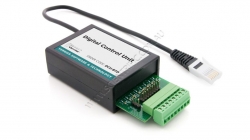
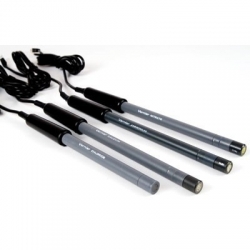


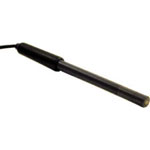
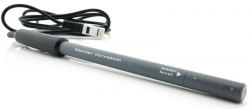
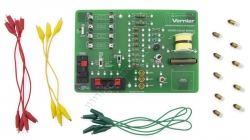
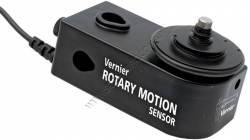
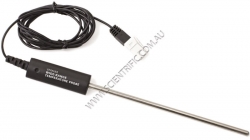
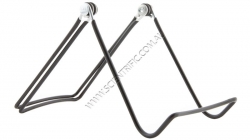
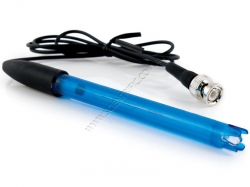
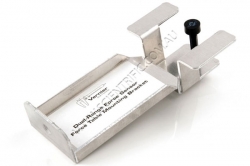

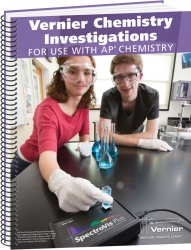





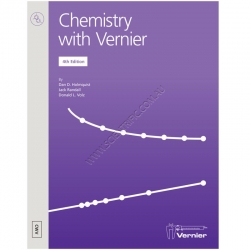




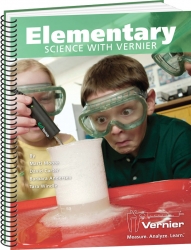
388 low relevance results shown for 'End'. Prev |1|2|3|4|5|6|7|8|9|10|11|12|13|14|15|16 | Next | View 100 per page
Showing low relevance matches only. Return to normal search results
Curriculum resources related to 'End'
ACSSU005 Foundation Physical SciencesForces and Moving - The way objects move depends on a variety of factors including their size and shape ACSSU073 Year 4 Biological Sciences
Animal Survival - Living things, including plants and animals, depend on each other and the environment to survive ACSSU175 Year 9 Biological Sciences
Organ Systems - Multi-cellular organisms rely on coordinated and interdependent internal systems to respond to changes to their environment ACSSU176 Year 9 Biological Sciences
Ecology - Ecosystems consist of communities of interdependent organisms and abiotic components of the environment; matter and energy flow through these systems ACSBL046 Year 11 Cells and multicellular organism
Cells as the basis of life - Movement of materials across membranes occurs via diffusion, osmosis, active transport and/or endocytosis ACSCH016 Year 11 Chemical fundamentals
Properties and structure of atoms - Trends in the observable properties of elements are evident in periods and groups in the periodic table ACSCH025 Year 11 Chemical fundamentals
Properties and structure of materials - Materials are either pure substances with distinct measurable properties (for example, melting and boiling point, reactivity, strength, density) or mixtures with properties dependent on the identity and relative amounts of the substances that make up the ACSCH030 Year 11 Chemical fundamentals
Properties and structure of materials - Ions are atoms or groups of atoms that are electrically charged due to an imbalance in the number of electrons and protons; ions are represented by formulae which include the number of constituent atoms and the charge of the ion (for example, O2–, SO42–) ACSCH032 Year 11 Chemical fundamentals
Properties and structure of materials - The characteristic properties of metals (for example, malleability, thermal conductivity, electrical conductivity) are explained by modelling metallic bonding as a regular arrangement of positive ions (cations) made stable by electrostatic forces of attra ACSCH037 Year 11 Chemical fundamentals
Chemical reactions - Endothermic and exothermic reactions can be explained in terms of the Law of Conservation of Energy and the breaking and reforming of bonds; heat energy released or absorbed can be represented in thermochemical equations ACSCH066 Year 11 Molecular interactions and reactions
Aqueous solutions and acidity - The pH scale is used to compare the levels of acidity or alkalinity of aqueous solutions; the pH is dependent on the concentration of hydrogen ions in the solution ACSCH097 Year 12 Equilibrium acids and redox reactions
Chemical equilibrium systems - Acids are substances that can act as proton (hydrogen ion) donors and can be classified as monoprotic or polyprotic depending on the number of protons donated by each molecule of the acid ACSCH102 Year 12 Equilibrium acids and redox reactions
Chemical equilibrium systems - Volumetric analysis methods involving acidbase reactions rely on the identification of an equivalence point by measuring the associated change in pH, using chemical indicators or pH meters, to reveal an observable end point ACSPH099 Year 12 Gravity and electromagnetism
Gravity and motion - Projectile motion can be analysed quantitatively by treating the horizontal and vertical components of the motion independently ACSPH100 Year 12 Gravity and electromagnetism
Gravity and motion - When an object experiences a net force of constant magnitude perpendicular to its velocity, it will undergo uniform circular motion, including circular motion on a horizontal plane and around a banked track ACSPH098 Year 12 Gravity and electromagnetism
Gravity and motion - The vector nature of the gravitational force can be used to analyse motion on inclined planes by considering the components of the gravitational force (that is, weight) parallel and perpendicular to the plane
Products related to 'End'

Vernier Digital Control Unit
VERNIER DIGITAL CONTROL UNIT
Including Vernier's DCU with your standard Vernier sensors provides a perfect way to implement hands-on STEM and engineering projects in the classroom. The engaging quality of DCU projects will appeal to students who may not necessarily be dra...
Order code: DCU-BTD

Vernier Ammonium Ion-Selective Electrode
VERNIER AMMONIUM ION-SELECTIVE ELECTRODE
Vernier's Ammonium Ion-Selective Electrode (ISE) can be used to measure the concentration of ammonium (NH4+) in aqueous samples.
Use the Vernier Ammonium ISE to measure levels of ammonium ions introduced from fertilizers. It can...
Order code: NH4-BTA

Vernier Calcium Ion-Selective Electrode
VERNIER CALCIUM ION-SELECTIVE ELECTRODE
Vernier's Calcium Ion-Selective Electrode (ISE) can be used to measure the concentration of Calcium (Ca2+) in aqueous samples.
Data from the Vernier Calcium ISE can give a good indication of hardness of water (as Ca2+). The conce...
Order code: CA-BTA

Vernier Chloride Ion-Selective Electrode
VERNIER CHLORIDE ION-SELECTIVE ELECTRODE
Vernier's Chloride Ion-Selective Electrode (ISE) is used to measure the concentration of chloride (Cl-) in aqueous samples.
The concentration of the chloride ion gives a quick measurement of salinity of water samples. Use the Ve...
Order code: CL-BTA

Vernier Nitrate Ion-Selective Electrode
VERNIER NITRATE ION-SELECTIVE ELECTRODE
Vernier's Nitrate Ion-Selective Electrode (ISE) can be used to measure the concentration of Nitrate (NO3-) in aqueous samples.
Nitrate concentration, which can be increased by acidic rainfall, fertilizer runoff from fields and pl...
Order code: NO3-BTA

Vernier Potassium Ion-Selective Electrode
VERNIER POTASSIUM ION-SELECTIVE ELECTRODE
The Vernier Potassium Ion-Selective Electrode can be used to measure the concentration of potassium (K+) ions in aqueous solutions.
The Vernier Potassium Ion-Selective Electrode makes the measurement of potassium ions portable....
Order code: K-BTA

Vernier Circuit Board 2
VERNIER CIRCUIT BOARD 2
The Vernier Circuit Board 2 is a convenient platform for circuit labs, from basic series and parallel circuits to RLC circuits. Many components are provided for experimentation, and additional components can be added to expand the capability of thi...
Order code: VCB2

Vernier Rotary Motion Sensor
VERNIER ROTARY MOTION SENSOR
The Vernier Rotary Motion Sensor is a bidirectional angle sensor designed to measure rotational or linear position, velocity and acceleration.
The Vernier Rotary Sensor is used for a variety of investigations including:
• Measurement of ro...
Order code: RMV-BTD

Vernier Wide Range Temperature Probe
VERNIER WIDE RANGE TEMPERATURE PROBE
Vernier's rugged Wide-Range Temperature Probe measures a wide temperature range from –20 to 330°C. The high upper limit of the sensor allows melting point determinations of most organic compounds. It uses Resistance Temperature Detecti...
Order code: WRT-BTA

Vernier LabQuest 3 Stand
VERNIER LABQUEST 3 STAND
The Vernier LabQuest 3 Stand lifts a LabQuest 3 off the workspace at a steep angle for improved viewing and to reduce the possibility of damage due to spills.
This stand is designed to support a LabQuest 3. It can be used with a LabQuest 2 alth...
Order code: LQ3-STN

Vernier pH Electrode BNC
VERNIER PH ELECTRODE
This is a replacement electrode only. It will NOT work without either EA-BTA Vernier Electrode Amplifier or the discontinued Vernier Go Wireless Electrode Amplifier
This Vernier gel-filled...
Order code: PH-BNC

Vernier Force Table Adapter
VERNIER FORCE TABLE ADAPTOR
The Vernier Force Table Adapter extends the versatility of your Vernier Dual-Range Force Sensor and Vernier Go Direct Force and Acceleration Sensor by increasing the mounting possibilities. It is specifically designed to attach to a round force...
Order code: FTA-DFS

Vernier Standard-to-Mini USB Adaptor
VERNIER STANDARD TO MINI USB ADAPTOR
This adaptor allows a Go!Temp or Go!Link* to connect to the USB port of a TI-84 graphing calculator. The adaptor has a USB standard-A receptacle which connects to the Go!Temp or Go!Link and a USB Mini-A USB plug that connects to the ca...
Order code: USB-MINI

Vernier Chemistry Investigations for AP
VERNIER CHEMISTRY INVESTIGATIONS FOR USE WITH AP CHEMISTRY.
This lab book provides 16 inquiry-based laboratory experiments aligned with the Advanced Placement inquiry investigations published by The College Board of America. Each experiment guides students to investigate ...
Order code: APCHEM

Vernier Chemistry Investigations for AP - Electronic Version
VERNIER CHEMISTRY INVESTIGATIONS FOR USE WITH AP CHEMISTRY - ELECTRONIC
This lab book provides 16 inquiry-based laboratory experiments aligned with the Advanced Placement inquiry investigations published by The College Board of America. Each experiment guides students to ...
Order code: APCHEM-E

Advanced Biology with Vernier
ADVANCED BIOLOGY WITH VERNIER
Advanced Biology with Vernier is a lab book containing 17 ready-to-use experiments appropriate for advanced high school and tertiary biology courses. Use it in addition to BWV Biology with Vernier for a comprehensive set of topics. For inquir...
Order code: BIO-A

Advanced Biology with Vernier - Electronic Version
ADVANCED BIOLOGY WITH VERNIER - ELECTRONIC
Advanced Biology with Vernier is a lab book containing 17 ready-to-use experiments appropriate for advanced high school and tertiary biology courses. Use it in addition to BWV Biology with Vernier for a comprehensive set of topic...
Order code: BIO-A-E

Biology with Vernier
BIOLOGY WITH VERNIER
Biology with Vernier is a lab book containing 31 experiments in cell respiration, photosynthesis, membrane diffusion, osmosis, human physiology, transpiration, fermentation and other important biology concepts.
Experiments are included for 12 Vernier...
Order code: BWV

Biology with Vernier - Electronic Version
BIOLOGY WITH VERNIER - ELECTRONIC
Biology with Vernier is a lab book containing 31 experiments in cell respiration, photosynthesis, membrane diffusion, osmosis, human physiology, transpiration, fermentation and other important biology concepts.
Experiments are included f...
Order code: BWV-E

Chemistry with Vernier
CHEMISTRY WITH VERNIER
Chemistry with Vernier is a lab book containing more than 35 experiments in thermochemistry, gas laws, acid-base reactions, equilibrium, electrochemistry, electrolytes, states of matter and more.
Experiments are included for the Gas Pressure Sen...
Order code: CWV

Chemistry with Vernier - Electronic Version
CHEMISTRY WITH VERNIER - ELECTRONIC
Chemistry with Vernier is a lab book containing more than 35 experiments in thermochemistry, gas laws, acid-base reactions, equilibrium, electrochemistry, electrolytes, states of matter and more.
Experiments are included for the Gas...
Order code: CWV-E

Vernier Investigating Motion (Elementary ebook)
VERNIER INVESTIGATING MOTION EBOOK
Investigate various properties of motion including the motion of a bouncing ball and a toy car with your Year 3-6 students using this electronic book of experiments and a GDX-MD Vernie...
Order code: ELB-MD-E

Vernier Lets Go! Investigating Temperature
LET'S GO! INVESTIGATING TEMPERATURE
Written especially for primary teachers, this lab book contains ten engaging temperature experiments for grades 2-6. Included are easy-to-use, black-line masters, lots of teacher tips and clear illustrations to facilitate understanding....
Order code: ELB-TEMP

Vernier Lets Go! Investigating Temperature - Electronic Version
LET'S GO! INVESTIGATING TEMPERATURE - ELECTRONIC
Written especially for primary teachers, this lab book contains ten engaging temperature experiments for grades 2-6. Included are easy-to-use, black-line masters, lots of teacher tips and clear illustrations to facilitate u...
Order code: ELB-TEMP-E

Elementary Science with Vernier
ELEMENTARY SCIENCE WITH VERNIER
Elementary Science with Vernier is a lab book containing 43 fun and engaging experiments for students in grades 2-6. Activities investigate the topics of temperature, motion, force, magnetism, light, electricity and pressure. Also included ...
Order code: EWV
388 low relevance results shown for 'End'. Prev |1|2|3|4|5|6|7|8|9|10|11|12|13|14|15|16 | Next | View 100 per page



 ,
,